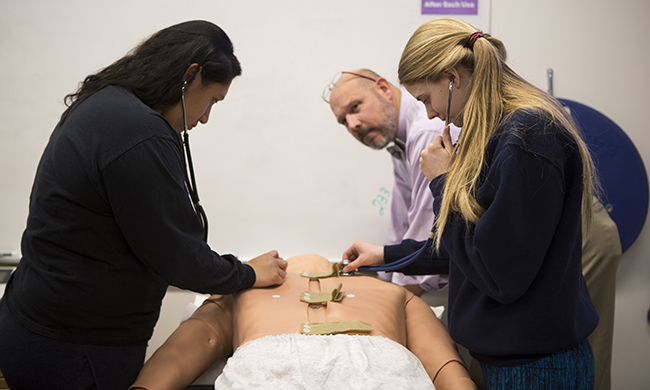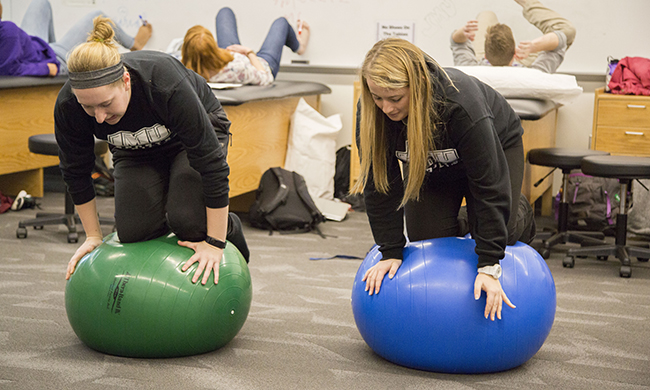A high-impact learning environment
New athletic training classrooms boost program
Health and Behavior
SUMMARY: The upgraded space allows for more efficient teaching and immediate feedback for the students. High-fidelity patient simulators challenge students to utilize skills and make critical decisions to care for life threatening conditions such as sudden cardiac arrest.
By: Lauren Mitchell
Creative Services Student Writer
After spending years in a cramped classroom and under-equipped lab space, the athletic training (AT) program has moved to a new space in the Health and Behavioral Studies building. Faculty were given the opportunity to collaborate and design the new space to fit their program’s needs. The high-end, fully functional athletic training lab and dedicated classroom space have dramatically enhanced the learning experience for both the students and the faculty.

The larger athletic training lab allows students to practice professional skills while professors are able to observe the whole classroom at once, leading to a higher-impact learning environment. “It makes you feel like you are the director of an orchestra. You have so much control and you can start and stop in real time as you watch the students during their skill practice,” explained program director Jamie Frye. The upgraded space allows for more efficient teaching and immediate feedback for the students. High-fidelity patient simulators challenge students to utilize skills and make critical decisions to care for life threatening conditions such as sudden cardiac arrest. The instructor can manipulate the simulators vital signs so the student has to determine whether or not CPR, advanced airways, and oxygen are needed to help the simulated patient. “The mannequins help our acute care be more realistic and standardized,” said senior AT student Amy Napier. The classroom has three B-Line Medical SimCapture stations that record the students during patient interactions such as performing and evaluation, instructing rehabilitation exercises, or transferring a patient to a spine board. Students then move to a debriefing station where they perform medical documentation of their patient interaction and view themselves so they can analyze their clinical decisions and patient interactions. The classroom has a projection screen with a document camera, white boards, and Apple TV that encourage more visual learning. With this wide range of technologies, students are able to tap into kinesthetic, visual and auditory components of learning.
Due to the larger capacity and increased equipment availability, the new space allows more students to pursue athletic training as a career. The top-notch athletic training room will help recruit students as the program transitions the professional degree to the master’s level, a professional mandate by the Commission on Accreditation of Athletic Training Education (CAATE). The quality of the space shows prospective students that they will be learning in a setting reflective of where they will be working as future professionals.
“We are really thankful to have this space because it truly invigorates teaching. We are able to do so much more with the added space, technology, and equipment to optimize the student’s learning experience,” said Frye.
